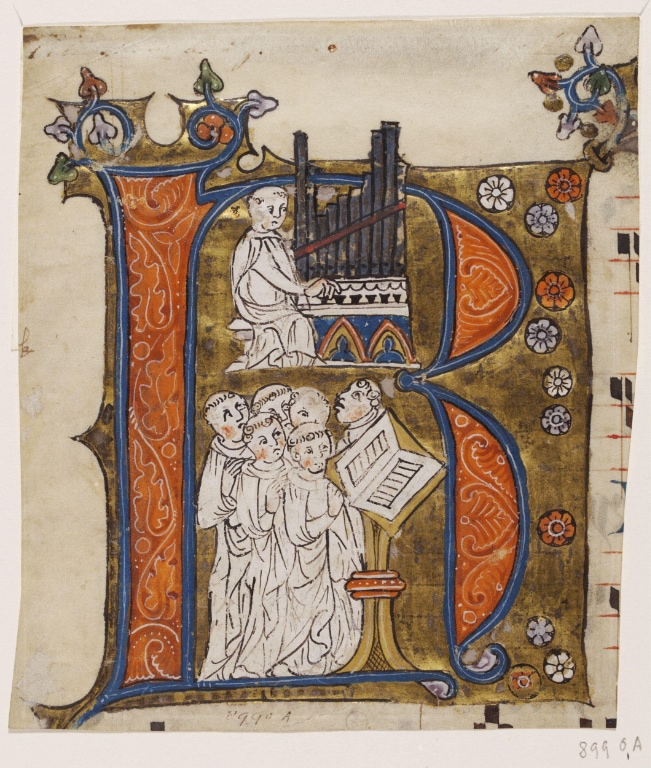Manuscript Cutting: Historiated Initial ‘R’ from a Cistercian Gradual showing Monks Singing

Unknown Artist
Historiated Initial ‘R’ from a Cistercian Gradual showing Monks Singing
Eastern Netherlands, about 1300-50
Gold, ink and pigment on parchment, 152 x 134 mm
Victoria and Albert Museum (No. 8990A)
This initial ‘R’ provides a good example of the intended use of choir books. Monasteries are often assumed to have been solemn places for quiet contemplation. Instead, the soundscape of the monastery was one of monks or nuns frequently singing in unison, sometimes accompanied by additional instruments such as the pipe organ shown above. The use of manuscripts such as these were inherently communal, designed to create a devotional unity. In times between prayer, Cistercian monks (identified by their white robes), also devoted themselves to manual labour and humility, as this was thought to nurture spiritual growth.
The fragmentation of the parent volume of this image means that its accompanying music has been lost, but if we look closely to the right and bottom of the cutting we we can imagine what sort of music the choir is performing. Single-line plainsong or chant is a style of music that formed the staple of musical practice in both medieval monasteries and secular church settings. While the approach to rhythm in this music is still subject to debate, it likely responded in some way to the profile of the melodic shapes and to emphases in the text. While it was almost always sung without instrumental accompaniment, the organ – typically, as shown in this miniature, also playing a single line of music – was frequently used to play in alternation with the voices. The figures on either side of the group of monks stare attentively at the organist, ensuring smooth alternation between instrument and voices. The placement of the hands of the left-hand monk hands on the shoulders of the person in front of him may depict the practice of rhythmic tapping to ensure the group performs the chant in unison. It was through practice such as this that large groups were enabled to sing collectively from a single book. Focusing on small elements in manuscript illustrations helps us to understand the daily devotional practices of medieval people.